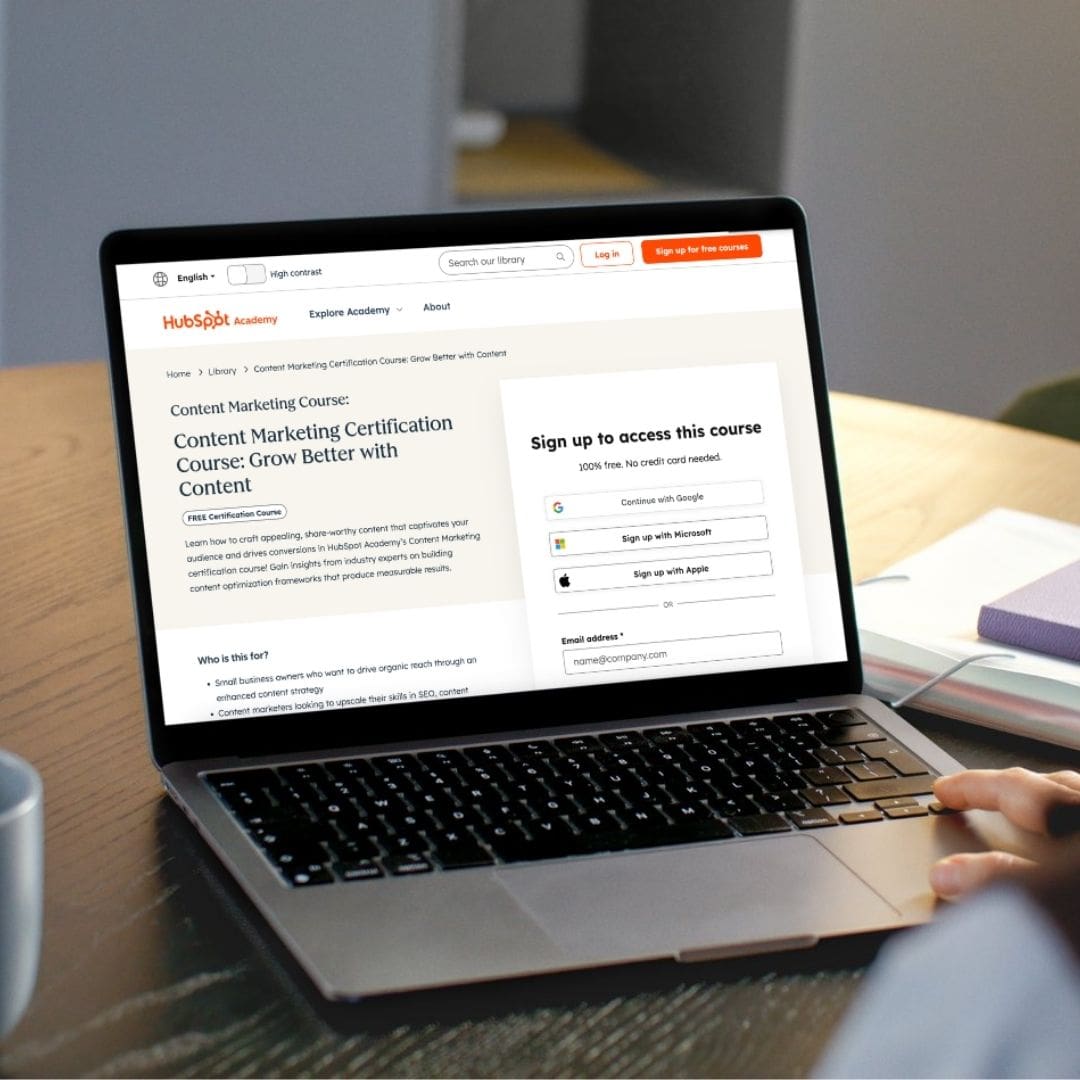Keyword Strategy: How To Identify Low-Hanging Fruit




When a website is first starting with search engine optimisation, it can be difficult to know where to begin. Keyword research is essential to forming an SEO strategy, giving you direction and areas to target.
Many marketers make a huge mistake by jumping in at the deep end. Don’t try to target highly competitive, high-value keywords from the off. Stronger domains will hold the top-ranking positions for the highest volume keywords, making it hard to compete. If you try to target these high-value keywords with no authority, the chances are that you will fail.
So, what keywords should you target, and how do you identify them? This guide will show you effective techniques for developing a keyword strategy to improve your SEO performance.
According to the Cambridge Dictionary, Low-Hanging Fruit is “something that is easy to obtain, achieve, or take advantage of.”
In SEO terms, low-hanging fruit keywords typically fall into the sweet spot when:
You can leverage these target keywords in your initial strategy, allowing you to start building keyword rankings.
Most SEO software, such as SEMRush, Ahrefs and Moz offers a keyword difficulty metric. This works as an indication of how easy or difficult it is to acquire rankings for a keyword. If you don’t have access to these platforms, then don’t worry – you can also find low-hanging fruit purely through free resources.
Depending on where you are on your SEO journey, your website may have some low-ranking keywords, or you may not have any. In the industry, people say the best place to hide a dead body is on page 2 of Google. A study from Backlinko shows that the number 1 result on any search has a click-through rate of 27.6% and is 10x more likely to be clicked than a page showing in position 10. Furthermore, the top 3 pages in Google SERPs receive 54.4% of all clicks for that search term.
No matter how well-built your site is or how optimised your content is, you’ll struggle to rank without link power. High-volume keywords will eventually become achievable, but we must walk before we can run. Focusing on quick wins allows you to start building rankings organically, giving you more exposure and building brand recognition.
Once your website starts appearing in the SERPs, you will gain organic traffic to your site off the back of it. Remember, these keywords are much lower volume, so the traffic numbers may be small initially.
With keywords ranking in the SERPs, your brand’s reputation will grow, leading to referrals and returning customers. Once you start to see your SEO efforts paying off, you can adapt your digital strategy towards other easier-to-rank keywords.
Client Example: We implemented this strategy for one of our clients in the luxury jewellery space with no prior keyword rankings. By focusing on high-relevancy, long-tail search terms, they saw a 140% increase in traffic within 3 months – without any paid ads.
To have an effective keyword strategy, you must analyse the competitive landscape. For example, if you are a new online shoe store, it’s not effective to try and compete against stores like Nike. Identify your closest competitors and mark your success against them.
To make your mark, you need to find the sweet spots in the competitive landscape. Identify keywords that you can target and focus your optimisation efforts towards them. Once you start seeing success in these areas, you can adapt your strategy to strive towards higher volume opportunities.
Using specific, detailed keywords that relate to your services can help you reach your target audience effectively. Long-tail keywords increase the likelihood of user engagement and conversions on your website. When your content matches what users want, they will likely have a better experience on your website.
If you have a small SEO budget, focus on low-competition keywords. This approach is a cost-effective way to improve your rankings. Purely through strategic content creation, you can usually rank for low-difficulty keywords. Just ensure that the content added to your website is unique and puts users’ interests first.
Sometimes in keyword research, you might discover a keyword with a lot of searches but low competition or difficulty. These keywords are rare but certainly valuable. This could mean you’ve found a gap in the market – at least one that your competitors haven’t yet discovered. Tailor your content to focus on these gaps, using insightful information to dominate that part of the industry.
Several metrics are key to assess when identifying keywords that fall into this category. Most SEO keyword research tools provide valuable insights into monthly search volume, competition and keyword difficulty. We need to consider all these metrics when fishing for quick-win solutions.
Most SEO tools usually offer a limited number of free keyword searches per month. This means that even without a paid licence, you can still utilise them to identify areas to target. However, free plans often lack full data accuracy, particularly around search intent and real-time SERP volatility. You also lose certain functionalities, such as being able to filter the data, so if you’re serious about SEO growth, it’s worth investing in a paid tool.
According to an Ahrefs study, over 96% of pages get no traffic at all from Google, based on a study of over 14 billion pages. That’s why it’s so important to create powerful, helpful content to make sure your page is discoverable.
Long-tail keywords are just as valuable as short-tail keywords, they just have lower search volume. Focusing on niche keywords and phrases is likely to capture users with a relevant search intent. Generally, low-hanging fruit relates to long-tail terms and phrases with low competition metrics. You can generally find SEO quick wins in long-tail search terms.
Keywords are often categorised by search intent. Everyone uses search engines differently depending on their age, gender, technical skills and the stage of their buying journey. It’s best practice to use a range of keywords across your website, even if they’re not transactional or commercial.
Online enquiries and purchases involve several steps, such as researching, choosing a solution, and selecting a company. Customers go through these touchpoints before making a decision.
Don’t ignore informational intent keywords just because they don’t convert immediately. In our experience, blog posts that answer “how to” or “why” questions often drive more backlinks than product pages — and that lifts your whole domain authority.
Several SERP features highlight your page content and increase the click-through rate (CTR) of your website. Google regularly trials new SERP features to ensure searchers can find answers to their questions quickly and effectively.
Featured snippets are a common SERP feature used on search engines. A featured snippet shows the answer to a question directly within the search engine result page (SERPs).
“People also asked” is another popular SERP feature, usually displayed in an FAQ style within the SERPs. This shows answers to questions without users needing to search again, related to the initial search query they made.
There may be questions related to your offering that don’t currently have any SERP features. This is a great opportunity for your website to build rankings and online visibility quickly.
Google’s documentation confirms that featured snippets are automatically plled from content based on how well they answer the specific search request and how helpful the answer is to the user.
The whole process starts with conducting keyword research. Head to the SEO tool of your choice. For the benefit of this blog, we’ll be using SEMRush.
To start your research, you’ll need to create a list of seed keywords. This initial strategy works the same whether your website is e-commerce or lead generation.
At Clever Clicks Digital, we use a repeatable process we call the Quick Win Loop: Identify → Filter → Cluster → Optimise → Track. This allows us to quickly prioritise keywords with the biggest impact relative to competition and intent.
Seed keywords are broad, top-level keywords that relate to your online offering. Heading back to our earlier example of the independent shoe retailer, this could be “running shoes” or “walking boots”. Enter the first seed keyword into the SEO tool, and look at the “keyword ideas” section.
This gives you a list of keywords related to your seed term. This seed keyword has over 136,000 variations to look through, but we don’t want to manually review that number of terms. A good way to filter out quick wins is to sort the table by keyword difficulty. You can also add extra filters, such as minimum/maximum volume, keyword difficulty or intent.
Filter out irrelevant keywords; for this example, it could be shoe brands that you don’t stock. This makes the list easier to analyse, ensuring you don’t miss out on any good opportunities.
While SEMrush is great for volume and keyword difficulty, we often cross-check with Ahrefs for backlink data and Keyword Insights for intent mapping. No one tool is perfect, so layering data helps us make smarter decisions.
Now that you have your list of potential keywords, it’s time to start sorting through them. You can approach this in several ways. Either export the table into an Excel spreadsheet so you can then manually sort through it. Alternatively, most SEO tools allow you to create lists directly on the platform.
On SEMRush, above the keyword table is a blue button titled “add to keyword list”. For this example, we’re going to create our keyword list using this function. Look through the sorted list to find product search terms that closely match what you offer. Add all the relevant keywords and phrases to your keyword list.
You may need to perform further searches with more specific seed keywords before completing your final list. Try to be as thorough as possible at this stage, so as to not miss any potential opportunities.
Don’t just focus on transactional and commercial intent keywords. Some of these terms and phrases may not work as landing pages but become blog content to draw in users from a different angle.
After finding keywords, plan how to organise them on your website for the best results.
The best way to structure your website content to achieve maximum success is by starting with a pillar page. A pillar page is a broad page, usually a category page, targeting the main term. Under each pillar page, you have several subpages, targeting more niche areas that fall under the seed term.
This may work differently depending on your product or service offering. Your pillar may have multiple subcategories that also have their own subcategories.
For example, your categories may look like this:

Keywords with a KD (Keyword Difficulty) of 0 – 14 are easy to rank for relatively quickly. Even keywords with a DA (Domain Authority) under 30 can achieve rankings with minimal domain authority.
The example above is just a top-level category structure to focus on some quick-win keywords. You’d also reinforce these terms alongside perhaps the colour or brand of the product on your product pages. This helps to cater for niche searches that perfectly match your product or service offering.
Now that you’ve identified the keywords you want to target and have a robust structure in place, it’s time to optimise.
On your category and product pages, you’ll first start with the most basic of optimisations.
Begin by including the keyword in your main title tag and using it in different forms throughout your page content.
Add the keyword to your meta title and description, as well as the page URL. Avoid keyword stuffing during your optimisations, as this can be counterproductive.
Looping back to your keyword list, you’ll remember those supporting keywords and questions I told you to add. These become content pieces that link back to your product and category pages. These blog posts help to capture keywords such as “cheap running shoes” or “best wide-fit running trainers”.
Remember, value is key in blog articles – don’t rush it or use it as an excuse to add product links. Try to find a relevant topic and gather as much valuable information as possible. Work the valuable content and expert insights into your blog for the best chance of getting your content ranked.
One mistake we often see is companies churning out low-effort blog content (or even AI-generated content) stuffed with keywords, hoping to rank. It rarely works. Google rewards value. The most successful blog posts are those that deeply answer one specific question better than anyone else.
You can also use hot topics to start building backlinks and authority. If your content is good enough, other sites will naturally pick it up and link to it. Alternatively, you can look at guest posting opportunities to start expanding your website’s reach.
Link building is an important part of SEO. Check any domains where you share your content to ensure they have a healthy backlink profile.
You should also consider internal links across your website to boost UX and help with page authority. When implementing internal links ensure you use relevant anchor text to internal pages or resources.
Now you know how to find, identify, structure and implement optimisation strategies for low-hanging fruit. But you may be asking yourself – where should I start?
There are several ways you could approach keyword optimisation for the quickest returns. Google Search Console is usually a good place to start if you’ve already begun to build rankings. You can use GSC to identify any missed opportunities.
Head to GSC and click on “search results” under the performance tab. Scroll down below the top graph and you’ll see a table of keywords. Google automatically shows clicks and impressions, so you’ll need to click “average position” at the top of the page.

You can then use the filter function to view keywords in the top 20 positions. This identifies any keywords that appear on page 2 of the SERPs.
If you have keywords with low KD sitting on page 2, you have an opportunity that’s ripe for the taking. With some SEO-driven optimisation, chances are you can push it onto page 1 and start to see some value from it.
This may mean restructuring your website slightly, its content, supporting key pages with blogs or building backlinks.
If you haven’t yet gathered any search console data, then you’ll need to approach optimisations differently. Revisit your keyword list and look for valuable keywords with low difficulty. Try to take volume into account when choosing which keywords to target, as you want to make it worthwhile.
If you have lots of products or services that fit the above, think about margins and high-value products or services. Target sections of your website that are going to give you the biggest return.
Low-hanging fruit keywords are a great opportunity for websites that are early on in their SEO journey. We’ve outlined simple steps to identify and implement keywords for online success.
This strategy helps you to lay a foundation for your website’s future growth. As your authority grows you can adapt your strategy to focus on high search volume keywords.
Whilst SEO software can speed up your optimisations, there are plenty of free resources that can help you achieve the same results.
As Google’s algorithm continues to evolve, expect low-difficulty gaps to close faster. But the brands who focus on intent-driven, useful content (not just keywords) will always stay ahead. The real secret is to get there first — and deliver better.
If you need some advice or support with your search engine optimisation, feel free to get in touch with our team.

How To Start A Career In Digital Marketing
Read full blog
Discover the top digital marketing trends set to shape 2026 from AI-driven personalisation to immersive content and evolving SEO strategies. Stay ahead of the curve.
Read full blog